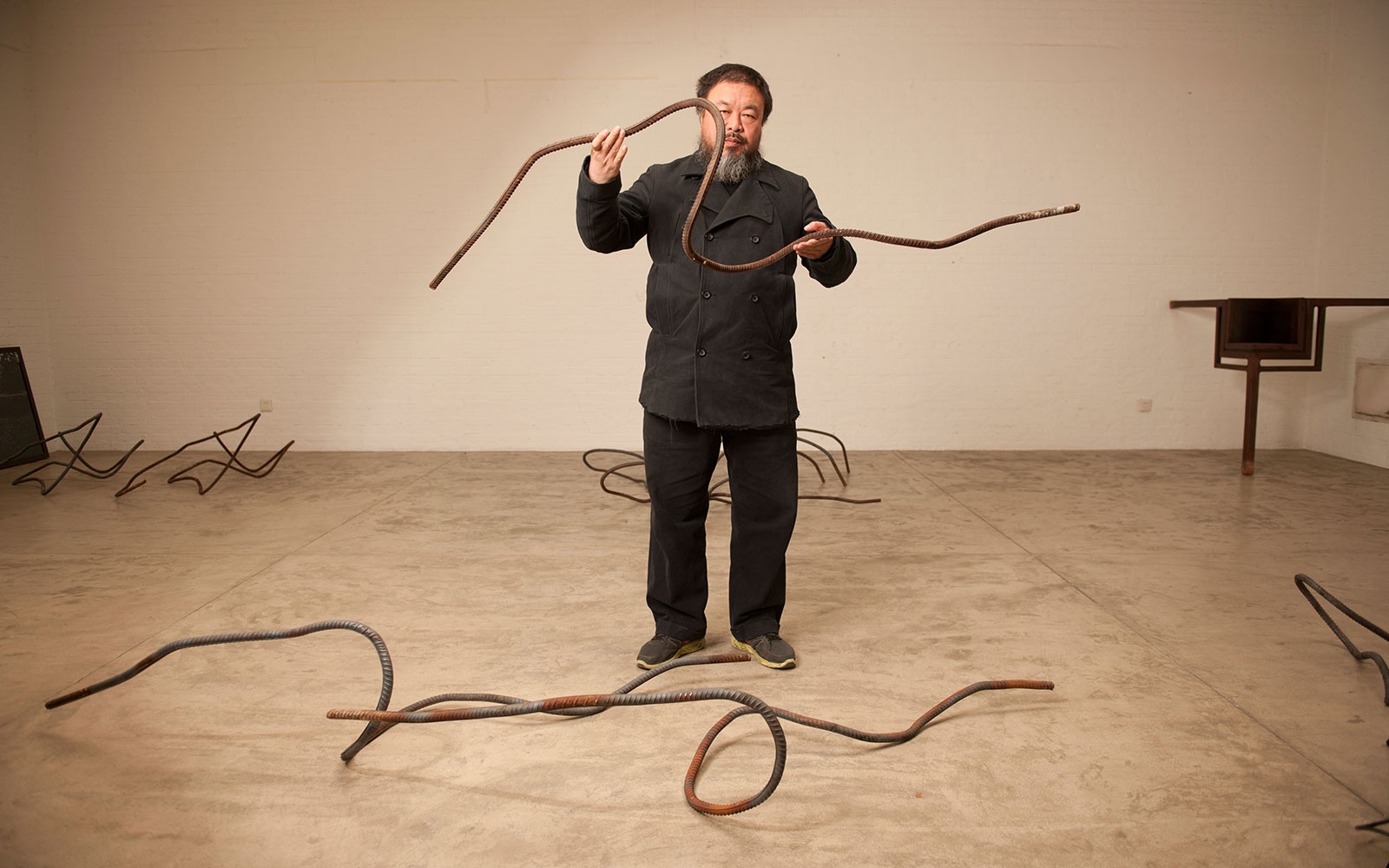
For the first time since being banned from leaving, the dissident artist is showing new work in his home country.
In the four years that Ai Wei Wei has been barred from leaving his home country, the Chinese artist has had high-profile shows at the Brooklyn Museum, D.C.’s Hirshhorn, Martin Gropius Bau in Berlin, and Alcatraz Island, assembled by teams of curators and assistants working off digital renderings and directions he gave over Skype. Until last month, he hadn’t had a solo show in China since 2009, but with a nod from authorities, the floodgates were opened with four of them in Beijing.
Though this relaxing of China’s de facto ban on his work is a step toward the rehabilitation of his status there, it’s still unclear exactly where he stands with regards to China’s censors, or whether he will be allowed to go to London for his September exhibition at the Royal Academy of Arts. “The nation, however oppressive, is working towards a more level society, within the rule of law,” Wei Wei tells the Art Newspaper. “It is a step closer to getting my passport, but that is not the goal. Without my passport, I am still an artist and I can use the internet to communicate.”
Wei Wei collaborator John Tancock calls the government’s decision making process “opaque,” speculating that “the authorities realise that they have created a situation that, sooner or later, has to be resolved.” This sudden permissiveness, somewhat anomalous during President Xi Jinping’s “cultural correctness” campaign, seems to have kicked off the profusion of Weiwei shows after word got out that his work at Beijing’s Galleria Continua and the adjacent Tang Contemporary Art Center had been given the OK by local authorities, with no objection save for a request that they push back the date, to avoid overlapping with the anniversary of the Tiananmen Square massacre.
Weiwei’s prolific social media use undoubtedly gave the Chinese government a preview of the content of the four shows, which lacks the overt politics of much of his recent work. There are no Lego portraits of political prisoners, for example, in the reconstructed Ming Dynasty ancestral hall he created for Continua. Still, plainclothes police officers did pay at least one visit to the gallery before the opening. Weiwei’s other current shows in Beijing include AB Blood Type, which is up until August 9th at Magician Space, and includes cast-iron recreations of quotidian objects, and Tiger, Tiger, Tiger, a collection of sculptures in wood, porcelain, and crystal, showing at Chambers Fine Art until August 31st.
Though private Chinese media outlets are still largely blocked from mentioning Weiwei in print, the state-sanctioned Global Times hailed the shows as a “fresh start,” asserting that “the ideal relationship between artists and politics is supposed to be moderate.” Also, “it would be meaningful if Ai could produce more works of art that could help broaden the Chinese public’s horizons and boost public interest in modern art.”
Though Weiwei has often faced criticism from other Chinese artists for directing his work toward Western audiences, Weiwei tells the Art Newspaper that showing work in his own country allows him to “face the criticisms of artists and other people here. It brings back a piece of the puzzle of reality.”
More good reads from T+L:
• Inspiration Overload: Birds-Eye Photos of Breathtaking Destinations
• The 20 Best Travel Movies to Watch on Netflix This Summer
• 15 Vacation Rentals That Belong on Every Architecture Nerd’s Bucket List